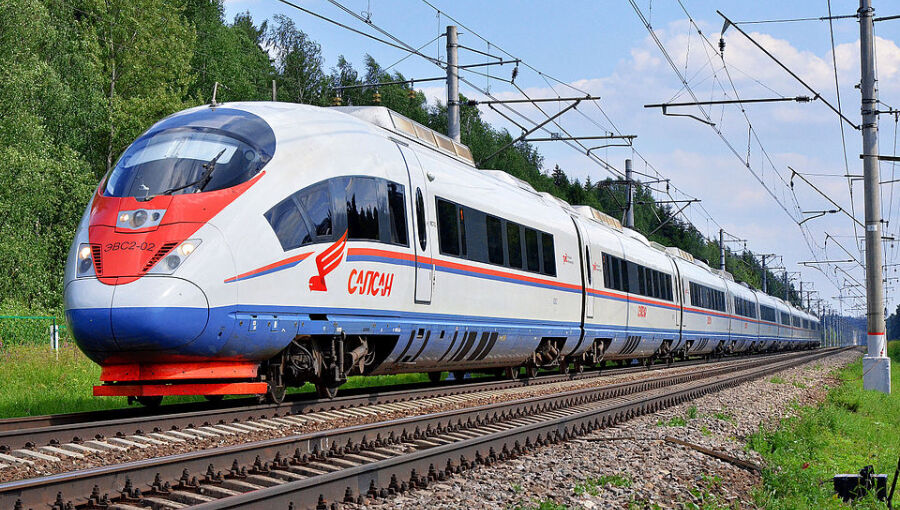Russia to build large-scale high-speed train network

When Russian prime minister Mikhail Mishustin announced that Vladimir Putin had approved more than 4,500km of new high-speed rail, the tone was businesslike, almost perfunctory. Yet the scale of the proposal — trains built domestically, running at up to 400km/h and connecting Moscow, St Petersburg, Minsk, Yekaterinburg, Rostov, Krasnodar, Sochi, Nizhny Novgorod and Kazan — was closer to what one observer described as “a civilisational wager.”
Construction is already underway on the first line between Moscow and St Petersburg, scheduled for completion in 2028. This would halve the current four-hour journey. The vision extends to four main arteries: a southern route through Rostov to Sochi, a western branch to Minsk and potentially on to Berlin, and an eastern line to Yekaterinburg that would cut travel times from 26 hours to about five.
Russia already has a high speed link between Moscow and St Petersburg, the Sapsan (Peregrine) rail link, constructed by the German company Siemens and launched in December 2009. The train has a maximum speed of 250 km/h and cut the journey time from an overnight trip to a mere four hours between the twin capitals. The new line linking the twin capitals will almost double the speed of the trains and could cut the journey to as little as two hours.
In 2006, Siemens and Russian Railways signed a €276 million order for eight high-speed trains with a 30-year service contract worth around €300 million, but Siemens pulled out of Russia after the Ukraine invasion in 2022.
“It’s obviously tempting for Russia’s passionate legion of detractors to dismiss such plans as a Potemkin promise, the sort of grandiose scheme floated in Moscow only to sink beneath its own concrete,” said journalist Brian McDonald in a social media post. “But look closer and the outlines are sharper than the cynics understand.”
The Kremlin has long wanted to link the other so-called millionki, or eleven Russian cities with a population of more than one million people, with a network of high-speed trains. The task is made easier by the fact that most of those cities and 80% of the population live in the European part of Russia, to the west of the Ural mountains.
The European part of Russia covers about 3.9mn square kilometres, less than the rest of Europe which covers about 5.9mn square kilometres.
“When you tie it all together, you’d be linking roughly 60mn people by high-speed transit, which in terms of sheer connectivity would be the most ambitious transport project ever attempted on the European continent,” McDonald said.
The scheme could also “help to stave off recession by adding a few percentage points to GDP growth annually and in a best-case scenario, if sanctions ease, it could even drive a late Putin-era boom," says McDonald.
Financing appears feasible. With national debt at around 15% of GDP, “even if [finance minister Anton Siluanov] borrows another $200bn it would still sit under 25%,” McDonald noted, pointing out that most work would be domestic, with China providing technical expertise where required. China has likewise, covered most of its west coast regions with a dense network of high-speed links in just the last decade. In addition it is building multiple rail links to connect Asia with Europe as part of its Belt and Road Initiative (BRI).
The greatest risks lie elsewhere. “In reality, the ghosts that haunt projects like this are related to corruption rather than engineering,” McDonald said, citing the Sochi Olympics as a cautionary tale where a massive $50bn was invested in infrastructure, making it the most expensive games in history. However, the city of Sochi has flourished since and did not become a white elephant.
“The sceptics will say no, while the realists will say: the first part of it for sure, and let’s see how the rest goes,” McDonald concluded.


Follow us online